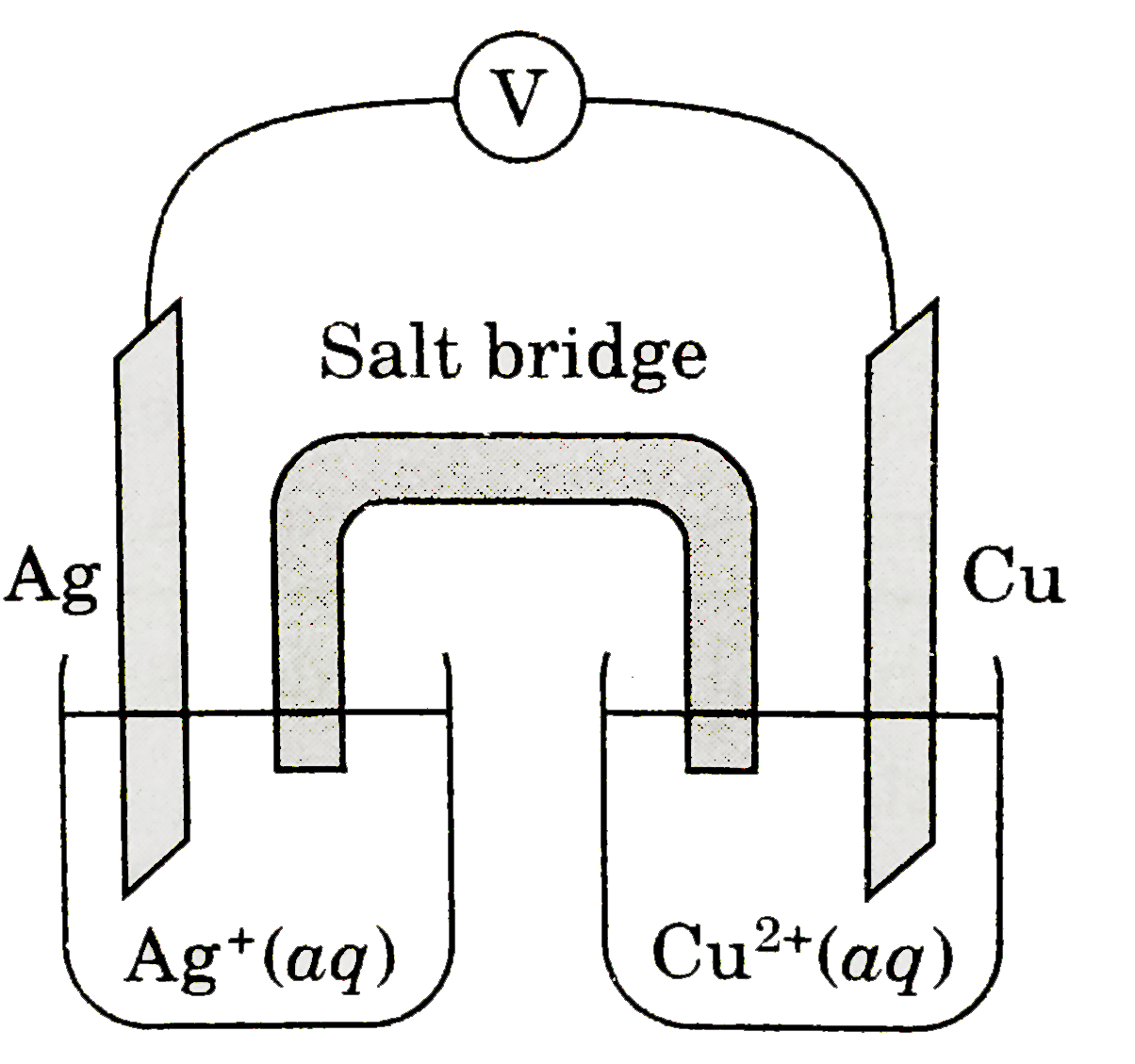Following reactions can occur at cathode during the electrolysis of aqueous silver nitrate solution using Pt electrodes :
Ag+(aq)+e−→Ag(s),E∘=0.80V
H+(aq)+e−→12H2(g),E∘=0.00V
On the basis of theri standars electrode protential values, which reaction is feasible at cathode and why ?
Ag++e−→Ag(s). This reaction is feasible because E∘ value for Ag+/Ag is more than that of H+/H2. Higher the value of E∘, more easy it will be to converty ion inot its free state.
Similar Questions
(a) Following reactions occur at cathode during the electrolysis of aqueous silver chloride solution :
Ag+(aq)+e−→Ag(s),E°=+0.80V
H+(aq)+e−→12H2(g),E∘=0.00V
On the basis of their standard reduction electrode potential (E°) values, which reaction is feasible at the cathode and why? (b) Define limiting molar conductivity. Why conductivity of an electrolyte solution decreases with the decrease in concentration ?
View SolutionFollowing reactions occur at cathode during electrolysis of aqueous silver chloride solution :
Ag+(aq)+e−→Ag(s),E∘=+0.80 V
H+(aq)+e−→1/2H2(g),E∘=0.00 V
On the basis of standard reduction potential (E∘ value), which reaction is feasible at cathode and why ?
View Solution
Knowledge Check
Ag+(aq)+e−→Ag(s)E∘=0.80V
Cu2+(aq)+2e−→Cu(s)E∘=0.34V

Which increases immediately if the surface area of the silver electrode is increased?AOverall cell voltageBRate of change of [Ag+]CMass of Cu electrodeDChange in ratio of electrode masses Δ(Mass of CuMass of Ag)Ag+(aq)+e−→Ag(s) E∘=0.80V
Co2+(aq)+2e(−)→Co(s) E∘=−0.28V
Use the standard reduction potentials to determine the standard potential for the reaction:
Co(s)+2Ag+(aq□)→Co2+(aq)+2Ag(s)A0.52VB0.66VC1.08VD1.88V
Following reactions occur at cathode during the electrolysis of aqueous copper (II) chloride solution:
CU2+(aq)+2e−→Cus, E∘=+0.34V
H+(aq)+e−→12H2(s), E∘=0.00V
On the basis of their standard reduction electrode potential (E∘) values, which reaction is feasible at the cathode and why?
View SolutionFollowing reactions occur at cathode during electrolysis of aqueous silver chloride solution :
Ag+(aq)+e−→Ag(s),E∘=+0.80 V
H+(aq)+e−→1/2H2(g),E∘=0.00 V
On the basis of standard reduction potential (E∘ value), which reaction is feasible at cathode and why ?
View Solution(a) Following reactions occur at cathode during the electrolysis of aqueous copper (II) chloride solution :
1Cu2+(aq)+2e−→Cu(s),E°=+0.34V
H++(aq)+e−→12H2 (g)
On the basis of their standard reduction electrode potential (E°) values, which reaction is feasible at the cathode and why?
(b) State Kohlrausch law of independent migration of ions. Write its one application.
View SolutionThe following two reaction can occur during electrolysis of aqueous sodium chloride solution
Na+(aq)+E−→Na(s)E∘=−2.71V
2H2O(l)+2E−→H2(g)+2OH∘(aq)E∘=−0.83V
Which reaction takes place preferentially and why ?
View SolutionThe following two reaction can occur during electrolysis of aqueous sodium chloride solution
Na+(aq)+E−→Na(s)E∘=−2.71V
2H2O(l)+2E−→H2(g)+2OH∘(aq)E∘=−0.83V
Which reaction takes place preferentially and why ?
View SolutionThe following two reaction can occur during electrolysis of aqueous sodium chloride solution
Na+(aq)+E−→Na(s)E∘=−2.71V
2H2O(l)+2E−→H2(g)+2OH∘(aq)E∘=−0.83V
Which reaction takes place preferentially and why ?
View Solution

